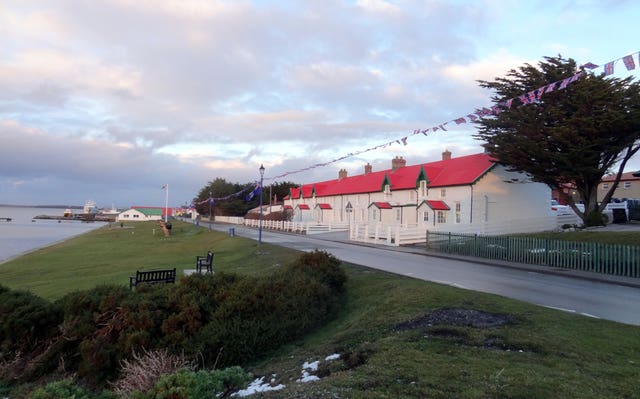Scottish scientists discover when Antarctic current first began
Dr Uisdean Nicholson and Professor Dorrik Stow from Heriot-Watt University in Edinburgh warned any changes could contribute to global warming.

Scientists have discovered when the “juggernaut” current that keeps Antarctica cool first began and warned any changes to it may contribute to global warming.
The Antarctic Circumpolar Current (ACC) moves 130-180 million cubic metres of water around the Southern Ocean every second, more than 100 times the flow of all the Earth’s rivers combined.
It keeps Antarctica cold and isolated from warmer oceans and seas, and affects water welling up from the deep Southern Ocean, one of the largest repositories of carbon dioxide on the planet.

Dr Uisdean Nicholson and Professor Dorrik Stow from Heriot-Watt University in Edinburgh combined seismic surveys off the Falkland Islands and data from sediment cores extending several hundred metres below the seabed to calculate when the ACC began, dating it to around 34 million years ago.
The researchers warn warmer air temperatures could strengthen the current and create 100-mile wide whirlpools that will shift carbon dioxide from the depths to the atmosphere, contributing to global warming.
Dr Uisdean Nicholson, a sedimentary geologist at Heriot-Watt University, said: “The Antarctic Circumpolar Current is a juggernaut of a current that has profound importance for Antarctica and the global climate.
“We now know it began around 34 million years ago.

“We know there was a sudden onset of very strong currents because we can see a phase of pronounced erosion in the deep ocean and the formation of a giant deep-water sand sheet, which was transported and deposited by the current.
“This coincides with the time that major glaciers began to form in Antarctica and is consistent with many scientists’ belief that the thermal isolation of Antarctica by this current was fundamental to the onset of glaciation.”
He added: “So Antarctica didn’t freeze solely because of decreasing C02 levels – the new current played a major role.
“At some point in the last million years, the currents decreased significantly.
“This was shortly after the time when we moved from a relatively warm climate, in the Pliocene, when there were trees at the South Pole and no major northern hemisphere glaciers, to the ice-house world of the Pleistocene, when the Earth has fluctuated between glacial and interglacial periods.”
Dr Nicolson said the study gives “intriguing new evidence” about conditions in the warm Pliocene, when CO2 levels last exceeded 400 parts per million – a level that has just been passed because of greenhouse gas emissions.
He said: “Understanding the oceanographic events of that era and how they changed will help us predict future changes and feedbacks between oceans and the atmosphere in a warming world.”
The new research, published in the journal Scientific Reports on Wednesday, also outlines how a stronger ACC could disrupt the carbon cycle.
Professor Stow, a sedimentologist and oceanographer, said: “Warmer air temperatures caused by higher atmospheric carbon dioxide will shift and strengthen the south-westerly winds that drive the ACC.
“This will change the dynamics of deep ocean currents and could result in upwelling of carbon dioxide from the deep ocean – which will, in itself, cause more global warming.
“It could also create more intense eddies – giant, 100-mile wide whirlpools that extend deep into the ocean – which could weaken the thermal isolation and increase the rapid melting of Antarctica.
“That is consistent with the pronounced erosion we see in the Falkland Plateau prior to the Pleistocene.”





